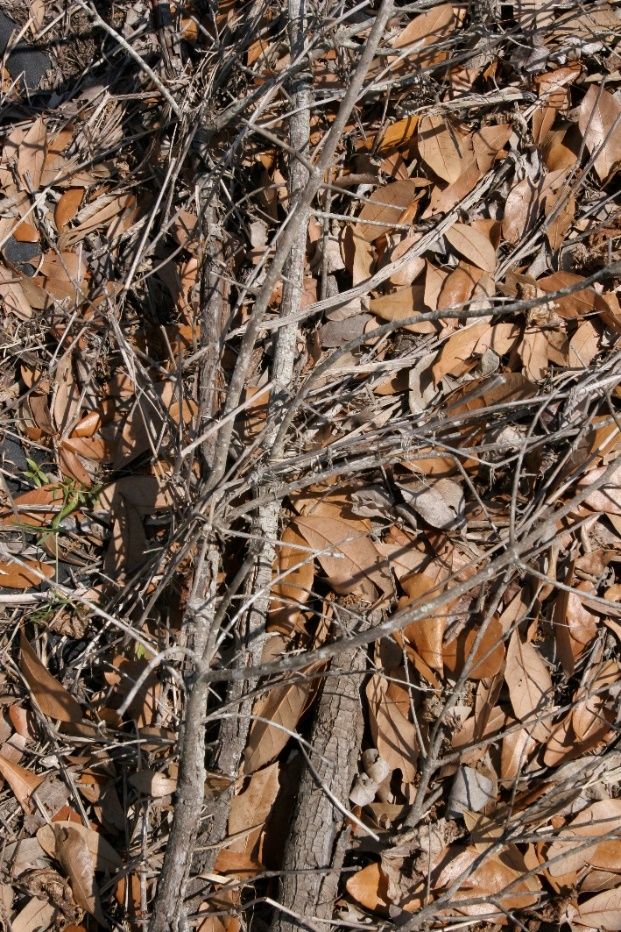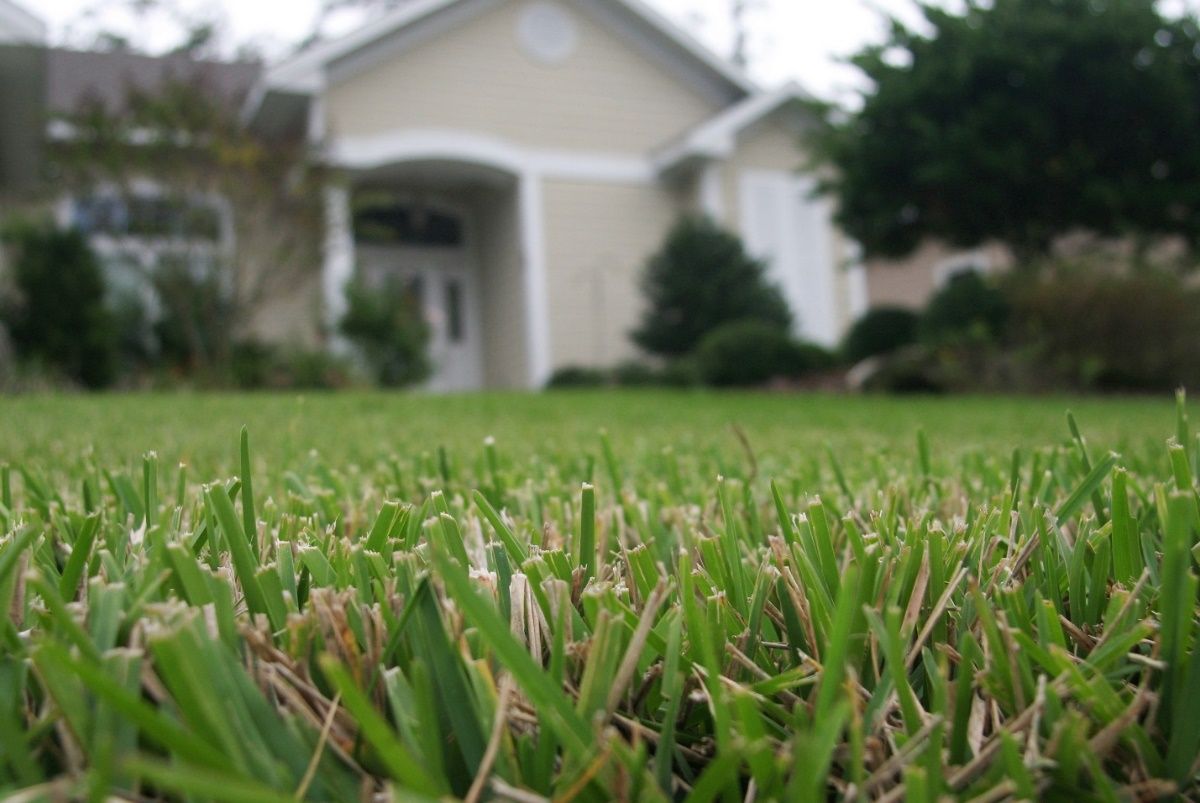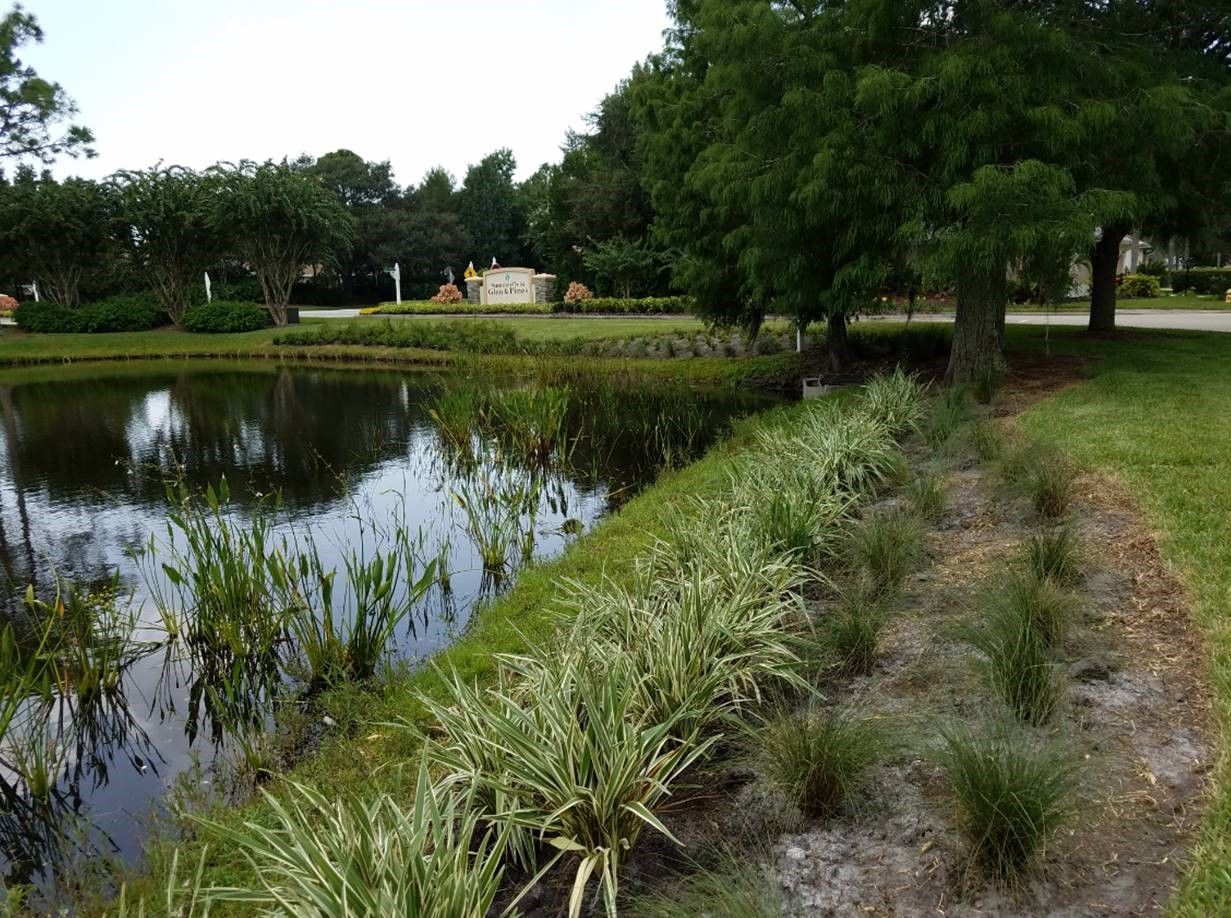Introduction and Purpose
The Florida-Friendly LandscapingTM (FFL) Program is a science-based collection of principles and recommendations helping you create a healthy and beautiful landscape that protects Florida’s natural resources. One way a Florida-friendly landscape helps protect our environment is by reducing nutrient pollution in our water. Nutrients are elements required for the growth of living things, but too many nutrients, especially nitrogen (N) and phosphorus (P), in our water can lead to water quality degradation and harmful algal blooms that can be unsafe for humans and the environment. Nutrients can enter our water from numerous sources, including fertilizers, decaying plant material (leaf litter and grass clippings), pet waste, soil erosion, and reclaimed water used for irrigation (Yang and Lusk 2018). Many of these nutrient sources are found in our residential communities, and residents in urban homes and apartments can take steps to reduce both the input of nutrients to the landscape and the mobilization of nutrients to nearby waters.
The FFL Program has nine guiding principles, each of which are discussed in full in other resources. Several of the FFL principles provide guidance for reducing the amount of nutrients mobilized from urban landscapes and applied to water resources. From the program, Principle # 7: Recycle Yard Waste and Principle # 9: Protect the Waterfront are two important steps toward protecting Florida’s water. The purpose of this publication is to provide guidance on specific actions you can take to help reduce nutrient inputs to our water, with a focus on the FFL Principle # 7 and Principle # 9. This publication is intended primarily for urban residents who manage their own landscapes, but it may also be used by landscaping professionals, homeowner’s associations, and municipal decision makers.
Background on Yard Wastes
Yard wastes such as leaf litter and grass clippings, which contain both N and P, should be kept out of waterbodies (Lusk, Toor, and Inglett 2020). Even though Florida’s subtropical climate means many of our community tree species only lose a limited number of their leaves during autumn, we do still have tree species that shed leaves and/or acorns substantially during certain months. Live oaks, for example, are a common residential tree species that sheds old leaves in the spring and often drops large quantities of acorns in the autumn. UF/IFAS Research has shown that the leaf litter and acorns from live oak trees can be one source of nutrient pollution to water if the leaves and acorns are allowed to accumulate on streets and sidewalks, where they are likely to be picked up by stormwater runoff and thereby mobilized to a nearby water body (Lusk, Toor, and Inglett 2020). Likewise, grass clippings left on streets and sidewalks after mowing have also been identified as a source of nutrient pollution in Florida waters. In a study on sources of N in stormwater runoff from an urban community in Hillsborough County, Florida, for example, N in stormwater increased at the beginning of the summer rainy season after live oak leaves had accumulated on streets and in street gutters during the preceding spring leaf drop season (Lusk, Toor, Inglett 2020).

Credit: Thomas Wright, UF/IFAS
When yard wastes accumulate on community streets, sidewalks, and rooftops, they can interact with stormwater when picked up by its runoff. Yard wastes mobilized by stormwater runoff will leach both N and P into the runoff, enriching the nutrient pollution load of the runoff. The leaf and grass particles in this runoff may eventually transport to a stormwater pond or other water body, where they will continue to leach N and P, again adding to the nutrient pollution level of the water body. Stormwater ponds are human-made ponds that collect excess stormwater during rain events to help prevent flooding and are sometimes expected to perform some measure of pollutant removal, as well. They are often connected to a natural water body, and so the water that comes out of stormwater ponds can be a source of pollution to natural waters. Stormwater ponds do not adequately remove all of the N and P from yard wastes, and a portion of the N and P that leaches from them into the ponds will eventually flow from the pond outlets to a receiving water body such as a stream, bay, canal, or lagoon (Jani et al. 2020). This is why it is important to ensure that yard wastes do not accumulate on streets and sidewalks, where they are easily mobilized by stormwater runoff.
Water-Smart Ways to Handle Yard Wastes
FFL Principle # 7: Recycle Yard Wastes states that people should keep as much yard waste material as possible onsite and accumulated within the landscape, instead of on impervious surfaces such as streets and sidewalks. Here are some specific guidelines to help you recycle yard wastes:
- Leave grass clippings on the lawn after mowing, so they don’t enter storm drains. They can decompose on the lawn and return nutrients to the lawn soil instead of adding nutrients to a nearby waterbody.
- Sweep or blow any grass clippings that land on streets and sidewalks into the lawn and never into storm drains or gutters.
- You can rake leaf litter and use it as mulch in gardens or as compost, if permitted by your homeowner’s association. You can also add acorns to compost piles.
- You can often place leaf litter, acorns, large seed pods, and other landscape debris on the curb for horticulture recycling in many communities. Check with your municipal waste collection company to see if they offer pickup and recycling of yard waste materials.
- If you see leaf litter or other vegetative debris accumulating in neighborhood storm drain inlets, take time once a week or so to remove the material from the drain inlets and place it in a compost pile or with your yard waste recycling materials.
- You can create self-mulching areas under large trees by allowing leaves and acorns to accumulate in place.
- Avoid “volcano mulching,” where any mulch (such as leaf litter) piles against tree trunks. To prevent rot, keep mulch at least 12–18 inches away from the base of trees and 1–2 inches away from shrubs.

Credit: UF/IFAS
FFL Principle # 9: Protect the Waterfront provides guidance on ways to protect community ponds, canals, and other waterbodies. This principle states that, first and foremost, you should maintain a 10-foot low maintenance zone around a waterbody. In this low maintenance zone, avoid fertilizing and using pesticides. Also avoid mowing this zone to reduce the risk of grass clippings entering the pond, where they may leach nutrients. It also provides a zone of active plant growth, where growing roots can take up excess nutrients in the soil zone close to a waterbody, thus acting to some degree as a zone of protection for the water. Other ways to manage yard wastes in a way that protects the waterfront include:
- Keep grass clippings out of community stormwater ponds (and any other adjacent waterbody). If you live on waterfront property, do not blow grass clippings into the water, but instead keep them within the lawn area.
- Like grass clippings and leaf litter, keep large seed pods and acorns out of waterbodies; do not blow them into nearby ponds, canals, or other waterbodies.
- Consider forming a group of residents within your community or homeowner’s association to regularly inspect the inlets of stormwater ponds and remove any accumulated debris such as yard wastes. Also walk the community several times a year—especially after spring leaf drop events—and inspect storm drains and street gutters for accumulated yard wastes.

Credit: Michelle Atkinson, UF/IFAS
Some Guidance on Composting Yard Wastes
If you choose to compost your yard wastes, here are some guidelines for doing so:
- Large or coarse debris such as tree branches will compost easier if they are put through a chipper first.
- Likewise, waxy leaves such as those from magnolia trees or live oaks will compost faster if they are put through a chipper first.
- Establish your compost near a water spigot, so you can add water regularly enough to keep the compost just moist. Also, place it in a sunny area with good drainage.
- You should build your compost pile in layers, each being 3–4 inches deep. The first layer should be a “green” material such as grass clippings or kitchen scraps (fruit and vegetable peels, for example). Next, add a “brown” layer of materials such as leaf litter, twigs, and acorns. Then top with another green layer and so on.
- Turn the compost often to speed up the composting process.
- UF/IFAS Extension offers a step-by-step tutorial on how to get started with composting, found here.
Conclusion
Yard wastes, including leaf litter, acorns, and grass clippings, can be a source of nutrient pollution to our water. The FFL principles provide guidance on how to manage yard wastes to protect Florida’s water resources. Yard wastes should be kept onsite and recycled as much as possible. For example, grass clippings can be left on the lawn to decompose naturally, where they will safely return nutrients to the soil instead of nearby waterbodies. Other materials such as leaf litter and acorns can be composted or placed on the curb for yard waste recycling in areas which offer that service. Keep all types of yard waste out of nearby waterbodies and never blow them into stormwater drain inlets or into a waterbody such as a stormwater pond or canal. Following the guidelines outlined above will help individuals and communities reduce one means of nutrient pollution transported to Florida’s water resources.
References
Jani, J., M. G. Lusk, Y. -Y. Yang, G. S. Toor. 2020. “Wet Season Nitrogen Export from a Residential Stormwater Pond.” PLoS ONE. 15(4): e0230908. https://doi.org/10.1371/journal.pone.0230908
Lusk, M. G., G. S. Toor, P. W. Inglett. 2020. “Organic Nitrogen in Residential Stormwater Runoff: Implications for Stormwater Management in Urban Watersheds.” Science of the Total Environment. 707: 135962. https://doi.org/10.1016/j.scitotenv.2019.135962
Yang Y. -Y., M. G. Lusk. 2018. “Nutrients in Urban Stormwater Runoff: Current State of the Science and Potential Mitigation Options.” Current Pollution Reports. 4: 112–127. https://doi.org/10.1007/s40726-018-0087-7